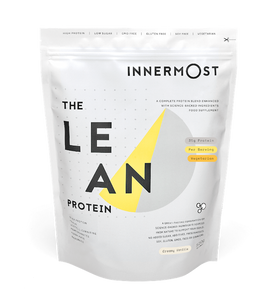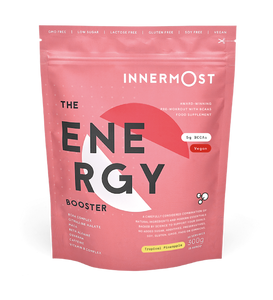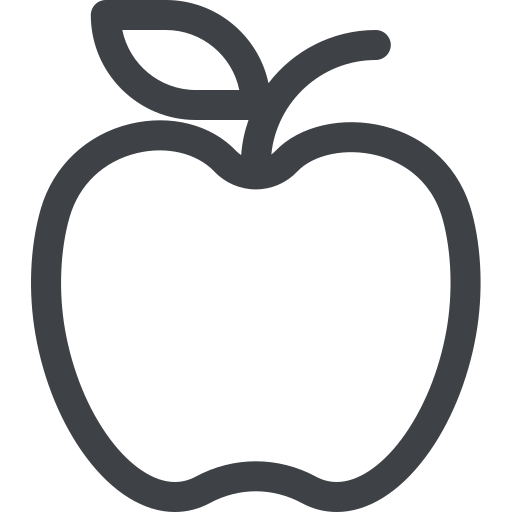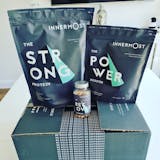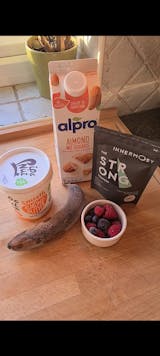Here at Innermost, we’re big believers in making healthy lifestyle choices – whether that be through exercise or nutrition. This means that we know a thing or two when it comes to diets. And unfortunately, the horrors of extreme diet culture.
From talking to qualified nutritionists like Drew Price and Kim Pearson, to getting the lowdown on all things diet related through our Demystifying Diet digital events, we’ve learned that the key to a healthy diet is a well-balanced, nutrient-based approach. This includes sustainable dieting and a healthy lifestyle.
Our interest and belief in a healthy lifestyle means that we advocate for these techniques, always. At Innermost we fight to eradicate harmful dieting techniques and dangerous ideologies, and this is why we find it so concerning to see the latest fad diet or weight-loss device hit our screens every other week, such as the infamous Baby Food Diet, Master Cleanse and more recently… that awful mouth clamp.
If you don’t know what we’re talking about, we’ll sum up some of these awful (and dangerous) fads up pretty quickly for you…
So, what are the worst diets? These are definitely up there. You’ll soon see why we’re so keen to eradicate extreme diet culture from society A.S.A.P…
- The Master Cleanse
Made famous by celebrities such as Beyonce and P!nk, the Master Cleanse is essentially a liquid diet, but it’s not quite the juice cleanse that probably popped into your mind. The Master Cleanse requires dieters to create a bizarre mix of lemonade, maple syrup and cayenne pepper, and consume nothing else for ten days.
Yeah… ten whole days. Not good.
Aside from starving your body from vital nutrients, partaking in a strict liquid diet such as this one will take a huge toll on your overall wellbeing – both mentally and physically. Quite frankly, we’re pretty shocked that this diet ever took off in the first place. Diets are supposed to up your energy levels, increase your focus and help you on your way to your fitness goals… not strip you of all those good things.
Avoid at all costs.
- The Baby Food Diet
Another one of these crazy diets made famous by the celeb scene is the Baby Food Diet. Yeah, you guessed it… the clue is in the name. This diet requires users to consume one jar of baby food three times a day, as a meal replacement for breakfast, lunch and dinner.
Whilst people initially may think this is a great idea, as baby food is rich in vitamins and relatively low in calories due to the small portions… Again, this fad is a no go, and definite fad diet. Users here are starving themselves of nutrients and will see weight gain accelerate as soon as normal food consumption resumes.
Stick to solids, people.
- The Cabbage Soup Diet
Fad diet alert. The premise of this fad diet is pretty much reducing your food consumption down to cabbage soup, and a couple of “accepted” foods, such as bananas or vegetables, for seven whole days. Yawn.
When it comes to the Cabbage Soup Diet, whilst cabbage soup and it’s accompanying diet-recommended food types are nutritious, boiling your diet down to these limited items (if you’ll pardon the pun) is a great way to sign yourself up to an unbalanced and unfulfilling diet.
You may lose weight in the short-term, but as soon as you return to healthy food consumption, that weight will come straight back on. Not worth it.
- The Clay Diet
Think the above extreme diets are bad? Well, this one shocked us a little bit. And considering the diets we’ve detailed so far above, that’s saying something.
The Clay Diet requires reckless dieters to stir clay into a glass of water, supposedly to clear the gut of toxins, whilst taking care of any hunger cravings at the same time due to quantity, whilst avoiding any calories. Aside from not being edible, in the long term, clay can have lasting effects on your intestines and result in nutrient deficiencies as a result of the absorbing nature of clay.
To anyone that has tried this, or is considering trying this, please, don’t eat clay. There are so many delicious foods out there to try and discover – this definitely isn’t the way forward. Here at Innermost we have a whole host of delicious meal plans, recipes and healthy, balanced diets for you to try out – why waste your time, energy and health on one like this?
- The Air Diet
Eye roll. This is just a fancy way of reckless individuals advising others to skip out on food all together. We’re not even going to waste our energy on explaining why this is bad. Food is fuel. Fuel is necessary for survival. End of story.
- The Restricting Mouth Clamp
Perhaps the most worrying, is the most recent diet contraption to hit the mainstream media. If you’re lucky enough to have not come across the barbaric mouth clamp contraption yet, you’re in for the shock of your life. Prepare yourselves.
Astonishingly, researchers in New Zealand have created what they have dubbed a “world-first weight-loss device”, that pretty much clamps your mouth shut. This device means that you won’t be able to open your mouth wider that 2mm, with the idea that this will stop patients from eating solid foods, and therefore be restricted to a lower calorie, liquid diet (such as the above Master Cleanse).
The device is magnetic and is fitted (sort of like a dental brace) to the patients upper and lower jaw, fit with locking bolts to keep the device in place.
Unsurprisingly, these researchers are facing backlash for the creation… and rightly so. Not only does this device take inspiration from medieval torture apparatus, but this ‘solution’ to weight gain reduces the complex situation of obesity to something as simple as overeating, and that just isn’t the case.
These fads aren’t helpful, just harmful
We’re bringing your attention to these techniques not to increase the public knowledge of these reckless methods, but to highlight harmful diet culture, and change the discourse. At Innermost, we want to ensure that our community are as clued-up as can be when it comes to healthy lifestyle choices, so we’re here to bust some harmful ideologies, one step at a time.
Unfortunately, these fads and techniques are pretty prevalent in the media, with the subject recently being thrown into the spotlight again with the alteration of junk food advertising on UK television screens. Whilst previously, junk food advertisements for fast food chains and brands have been on our screens twenty-four hours a day, the UK government has voted to ban these before 9pm.
Whilst it’s a step in a right direction, again, this isn’t the way to get people on the right track. Whether unhealthy food groups and types are advertised in the day times or not, people will opt for these products due to ease and affordability… so we need to place our focus on creating manageable, affordable and tasty meal plans, exciting and effective workout routines and successful mental health maintenance techniques for all.
What constitutes a healthy lifestyle?
Looking for tips on how to lose weight healthily? The basics of a healthy lifestyle are based in our mental, physical and social wellbeing. How can you achieve this? Well, it’s a combination of the below…
- Eating a balanced diet
- Getting regular exercise
- Achieving adequate sleep and rest
- Avoiding harmful substances like alcohol and tobacco
- Having a great work life balance
Whilst sometimes, when trying to juggle the stresses of everyday life, achieving all of the above can feel pretty overwhelming (and maybe impossible from time to time), making time for yourself and making the above a priority is a sure-fire way to ensure you are staying your healthiest and avoiding burnout.
We think that the discourse around dieting should be flipped on its head, in favour of our healthy lifestyle mantra.
Don’t struggle alone
Whilst we’re doing our best to squash fad diets and the harmful narrative around dieting and weight loss, we completely understand that there are people out there that struggle with their eating and dieting every single day, affecting their ability to lead a healthy lifestyle like the one outlined above.
It’s important to know that if you are suffering, you are not alone in these struggles, and there are people ready twenty-four-seven to help you through your tough times.
Get in touch with the below charities and helplines below, if you feel that you could be helped in any way:

